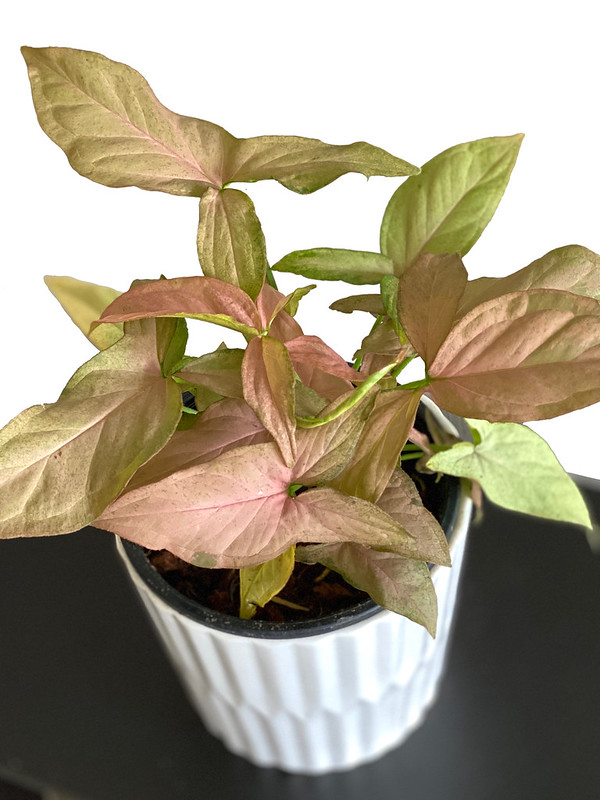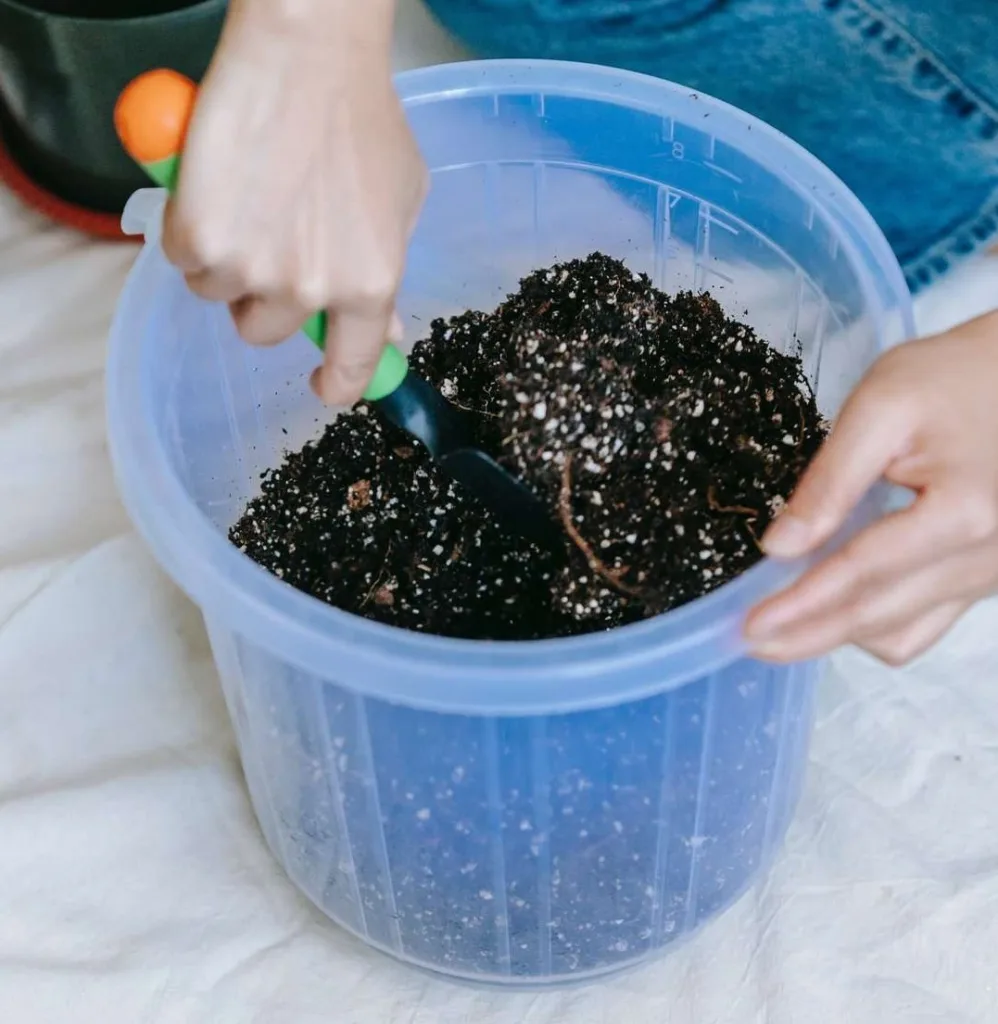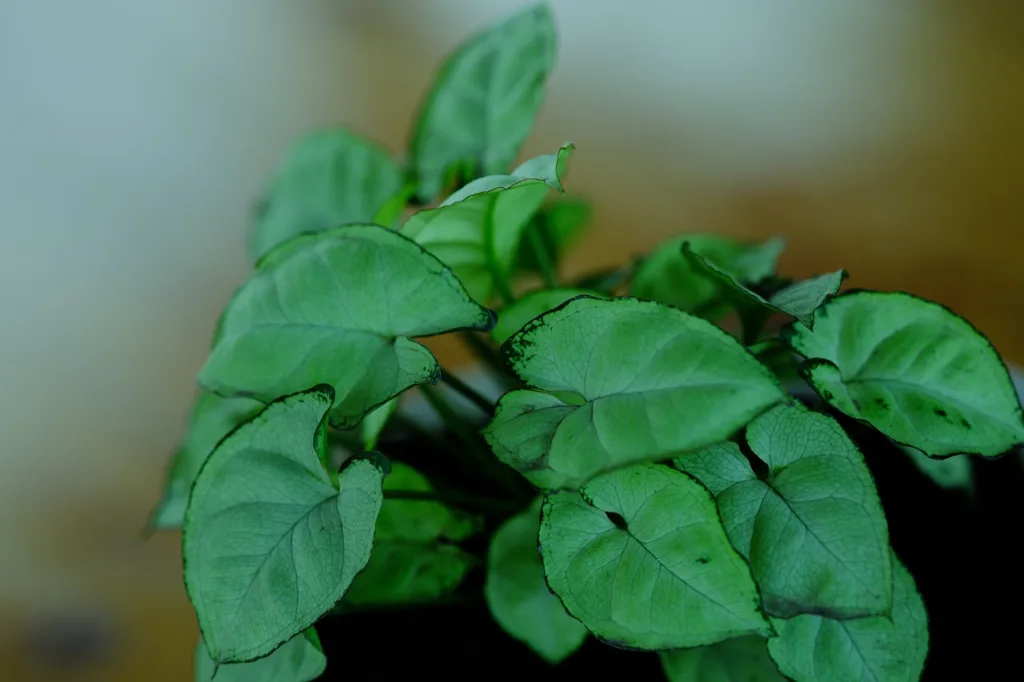Syngonium, also known as Arrowhead plant or Goosefoot plant, is a popular choice for indoor plant lovers.
With its beautiful leaves and easy care requirements, it’s no wonder why this plant has gained so much popularity.
In this comprehensive guide, we will take a closer look at how to grow and care for Syngonium to ensure that your plant blooms and brings beauty to your living space.
Choosing the Right Syngonium
Before we dive into the details of growing and caring for Syngonium, let’s start with choosing the right plant. Syngonium comes in various varieties, each with its unique features and leaf patterns.
Some popular varieties include the Syngonium podophyllum ‘White Butterfly’ with its white variegated leaves and the Syngonium Erythrophyllum with its striking red-veined foliage.
Consider your personal preferences and the lighting conditions in your home when selecting a syngonium plant.
Light Requirements
Syngonium plants prefer bright, indirect light. They can tolerate some degree of shade, but too much darkness will affect their growth and lead to leggy and weak stems.
Place your syngonium in a location where it can receive filtered sunlight or bright, indirect light for a significant portion of the day. Avoid exposing it to direct sunlight as this can scorch the leaves.
Temperature and Humidity
Syngoniums thrive in average room temperatures ranging from 60°F to 85°F (15°C to 29°C). It’s important to keep the plant away from drafts or sudden temperature fluctuations, such as near air conditioning vents or open windows. Maintain a stable temperature, and your syngonium will flourish.
As tropical plants, syngoniums appreciate higher humidity levels. If your home has dry air, consider using a humidifier or placing the plant on a tray filled with pebbles and water. Misting the foliage regularly can also help increase humidity around the plant.

Watering
The watering needs of syngonium plants vary depending on various factors such as the size of the plant, potting medium, and environmental conditions.
As a general rule, allow the top inch of the soil to dry out before watering again. Overwatering can lead to root rot, while underwatering can cause wilting and stunted growth.
To water your syngonium, thoroughly drench the soil until water drains out from the bottom of the pot. Discard any excess water to prevent waterlogged soil.
During the growing season, which typically spans spring and summer, you may need to water more frequently to keep the soil evenly moist.

Soil and Potting
Syngoniums prefer a well-draining potting mix that retains some moisture while allowing excess water to drain freely.
A mixture of peat moss, perlite, and regular potting soil makes an ideal growing medium for syngonium plants. Avoid using heavy soils that hold onto water, as this can lead to root rot.
When it comes to potting, choose a container that is slightly larger than the root ball. Using a pot with drainage holes is crucial to prevent waterlogging.
Repot your Syngonium every 2-3 years, preferably during the spring season, to refresh the soil and provide ample space for root growth.
Fertilizing
Regular fertilization is essential to ensure optimal growth and vibrant foliage in syngonium plants. During the active growing season, which is typically spring and summer, fertilize your plant monthly with a balanced, water-soluble fertilizer. Dilute the fertilizer to half the recommended strength to avoid overfeeding.
During the dormant period in fall and winter, reduce fertilization to once every two months or stop altogether.
Always follow the instructions provided on the fertilizer packaging to avoid overfertilizing, as this can lead to nutrient toxicity and harm the plant.
Pruning and Propagation
Pruning syngonium plants not only helps maintain their shape and size but also encourages bushier growth.
Trim back leggy stems and remove any dead or yellowing leaves. You can also pinch off the tips of the plant to promote branching and create a fuller appearance.
Syngonium plants are relatively easy to propagate. One common method is stem cuttings. Take a 4-6 inch cutting just below a leaf node and remove the lower leaves.
Dip the cut end in a rooting hormone and place it in a pot filled with a moist potting mix. Keep the cutting in bright, indirect light and maintain high humidity until roots develop.
Pest and Disease Control
Fortunately, syngonium plants are generally resistant to pests and diseases. However, there are a few issues you may encounter, such as spider mites, aphids, or mealybugs. Regularly inspect your plant for any signs of infestation, such as webbing or tiny insects. If pests are present, treat them with an organic insecticidal soap or neem oil.
Preventing pest problems is easier than treating them, so ensure good airflow around the plant, avoid overwatering, and regularly clean the leaves to minimize dust accumulation.

Types of Syngonium
Syngonium podophyllum: Commonly known as Arrowhead Plant, it has arrow-shaped leaves and is available in various cultivars with different colors.
Syngonium neon robusta: Known for its vibrant neon-colored leaves.
Syngonium erythrophyllum: This variety is recognized for its pink or red-toned leaves.
Syngonium podophyllum ‘White Butterfly’: Features variegated green and white leaves, resembling a butterfly pattern.
Syngonium podophyllum ‘Maria Allusion’: This cultivar has green leaves with creamy-white variegation.
Syngonium podophyllum ‘Pink Allusion’: Exhibits pink hues on its leaves, adding a touch of color.
Syngonium podophyllum ‘Pixie:‘ A dwarf variety with compact growth, suitable for small spaces.
Syngonium podophyllum ‘Albo-variegatum’: Known for its distinctive white variegation on the leaves.
Conclusion
Growing and caring for syngonium plants can be an immensely rewarding experience. With the right conditions and a little TLC, your syngonium can thrive and add a touch of natural beauty to your home.
Remember to provide adequate light, maintain optimal temperature and humidity levels, water your plant appropriately, and fertilize regularly.
Prune when necessary and address any pest or disease issues promptly. By following these guidelines, you’ll enjoy a thriving and lush syngonium plant for years to come.
So, go ahead and embark on your syngonium journey. Bring home this versatile and stunning plant, and let it enchant you with its captivating foliage!
FAQs
Is Syngonium a good indoor plant?
Yes, Syngonium is an excellent indoor plant. It is adaptable to indoor conditions and thrives in well-lit areas with indirect sunlight.
The plant is relatively low-maintenance, making it suitable for both beginners and experienced plant enthusiasts.
Is Syngonium a lucky plant?
Syngonium is often considered a symbol of good luck and positive energy. In many cultures, it is believed to bring prosperity and fortune to the home.
The plant’s vibrant and attractive foliage is also associated with positive vibes.
Do syngoniums like sun or shade?
Syngoniums prefer bright, indirect light but can tolerate lower light conditions. It’s advisable to keep them in a location with filtered sunlight.
While they can adapt to some shade, too much darkness may slow down their growth and affect their variegation.
Is Syngonium an air purifier?
Yes, Syngonium plants are known for their air-purifying qualities. They can help filter and cleanse indoor air by removing certain pollutants.
The plant absorbs pollutants through its leaves and converts them into nutrients. While not a replacement for dedicated air purifiers, Syngoniums can contribute to improving indoor air quality.

